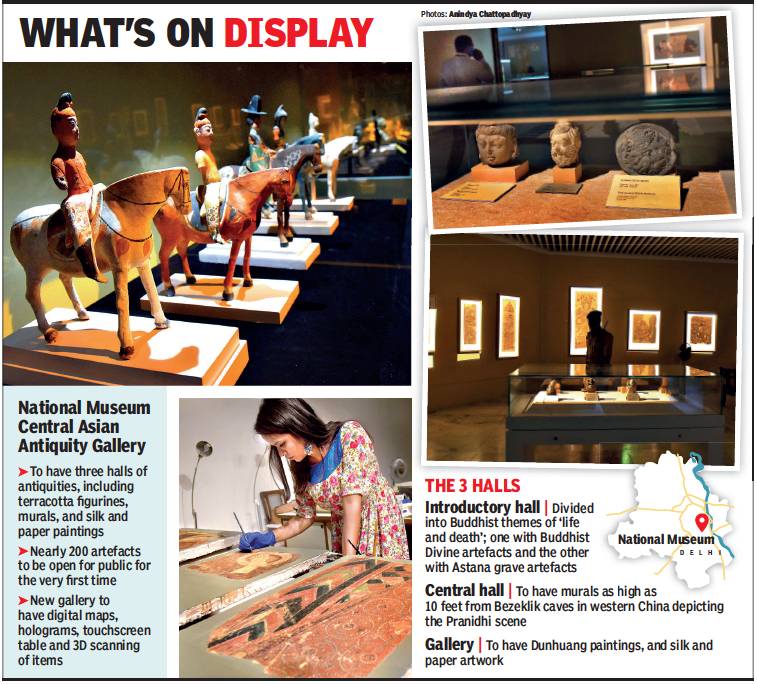National Museum, Delhi
This is a collection of articles archived for the excellence of their content. |
Central Asian Antiquities gallery
2021
Mohammad Ibrar, June 20, 2021: The Times of India

From: Mohammad Ibrar, June 20, 2021: The Times of India
Amid Covid, museum readies its rare Central Asian antiquities
New Delhi:
While the city was inactive due to the Covid-19 lockdown, there were some people who continued to work. That is the reason why, now that Delhi has resumed normal life, the National Museum will be able to showcase its new Central Asian Antiquities gallery, making it only the fourth museum to exhibit such artifacts after the repositories in London, Berlin and Moscow.
When the lockdown was announced mid-April, the work on the gallery was put on hold. “But we did not sit back idly,” said Subrata Nath, additional director general, National Museum. “We carried out the content work like creating catalogues and finished off the labelling though we could not carry out any physical work.”
Nath informed TOI the three halls in the Central Asian Antiquities gallery should be ready to be opened to the public in a few months. He said it would be for the first time that these artifacts, which were acquired in India a century ago and had remained with the Archaeological Survey of India, would be on public display. “The gallery has nearly 200 artifacts, among them Central Asian terracotta figurines, metallic items, paintings and murals.
According to the co-curator of the new gallery, the three halls are thematic. “In the first hall, visitors will get an idea of what they will see from a hologram of star objects,” the curator said. “These objects include a small 6th-7th century Buddha figure in Abhaya mudra, a wooden Buddha from Khotan, Xinjiang, China. These show clear Indian and Sarnath influence. The star objects also include a few terracotta figurines found buried in the Astana graves in China.”
The curator informed that the theme of the first gallery was life and death, the first epitomised by the sculpture of Divine Buddha and the latter by the items buried in Astana graves such as sandals and terracotta figurines of patrons.
The central gallery will have murals from the Bezeklik caves. “One such is the Prandihi scene where Buddha stands on a raft over a water body to signify how he is taking people across the river of life,” said the curator.
The third gallery’s theme is Dunhuang and will exhibit paper and silk paintings from around 7th-10th century plus a large bronze Ming Buddha.
The assistant curator said the idea behind the gallery was to find the Indian connection to these objects because the Buddhist sutras were taken to central Asia from India by travellers. “We are trying to showcase the amalgamation of Buddhist culture with the existing culture of different countries,” explained the curator.
Some conservation works have also been done on the artefacts, mostly preventive to stop further deterioration of the objects. An effort has been made, for instance, to fill the cracks in artwork.